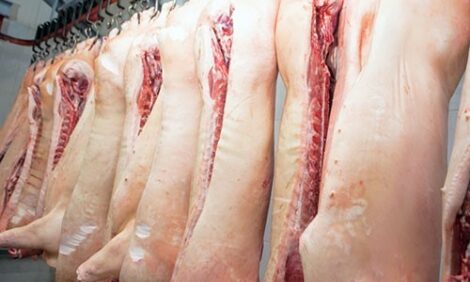



Pork Commentary: No Breeding Herd Expansion
US - The US breeding herd is holding steady and there has been no net expansion, writes Jim Long.Despite hitting record high hog prices in the last six months not one more sow.
Why? High hog prices have been accompanied by high feed prices. Farrow to finish profit margins have been okay but not substantial. Small pig cash prices were at times $25 per head below cost of production, which in itself does not make more pigs.
The hog to corn ratio, which has been below 15:1, has never and will never lead to breeding herd expansion.
To have breeding herd expansion you need optimism. Our industry is not optimistic. We are an industry of survivors. We have seen too many things hit us over the last few years. The list is long, months of financial losses, volatile and high feed prices, animal welfare, environment, labour, H1N1 (swine flu), recession, etc. All in all not a recipe for getting pumped up to add sows.
Productivity
Even though the breeding herd has held steady the last six months, the productivity of the herd continues to increase with the September – November pig crop up 750,000 more than the same time frame a year ago (57,359–58,088).
Productivity gains are expected to continue. The genetic trend line on litter size continues to increase. At Genesus, we are increasing our genetic trend by over a half pig per sow per year annually. Many of our competitors are also increasing litter size, while the genetic companies that are not keeping up are losing market share. Our premise is that the industry is inhabited by survivors plays out in the genetic business. Survivors realise they cannot stay competitive starting the day one pig born alive per litter behind their neighbours.
As incredible as it may seem, Genesus customers jump four pigs per sow per year by changing genetics – the same barn, same health, and the same people. This is a huge difference for cost of production and profitability. The best producers will continue to push the envelope and look for practical technology to enhance their production capacity.
Market inventory
The USDA December Hogs and Pigs Report market hog inventory indicates one million more hogs than a year ago (59,147 in 2010; 60,128 in 2011). The extra numbers will lead to about 40,000 more market hogs a week going forward in 2012. A significant number and certainly not price enhancing. The flip side is the continuing increase in US and world population, which continues to increase demand.
The US population in 2001 was 285 million; today, it is estimated to be about 313 million. That is an increase over the last 10 years of 28 million people or about an average of three million more per year. More people equal more pork customers. The world population is expected to increase 77 million this year. Global pork demand has been a major push for higher hog prices. People want meat protein.
Summary
The USDA December Hogs and Pigs Report had no surprises. The breeding herd has had no change in the last six months, productivity gains lead to bigger pig crop and market inventory. Total supply change is not significant. Price movement will be a demand driver. Less US total meat in 2012 (beef and chicken) will be price enhancing. We expect lean hogs to reach over a $1.00 lean in the summer of 2012.
“I am an optimist. It doesn’t seem too much use being anything else.” – Sir Winston Churchill.
Further Reading
| - | You can view the USDA Quarterly Hogs and Pigs report by clicking here. |









